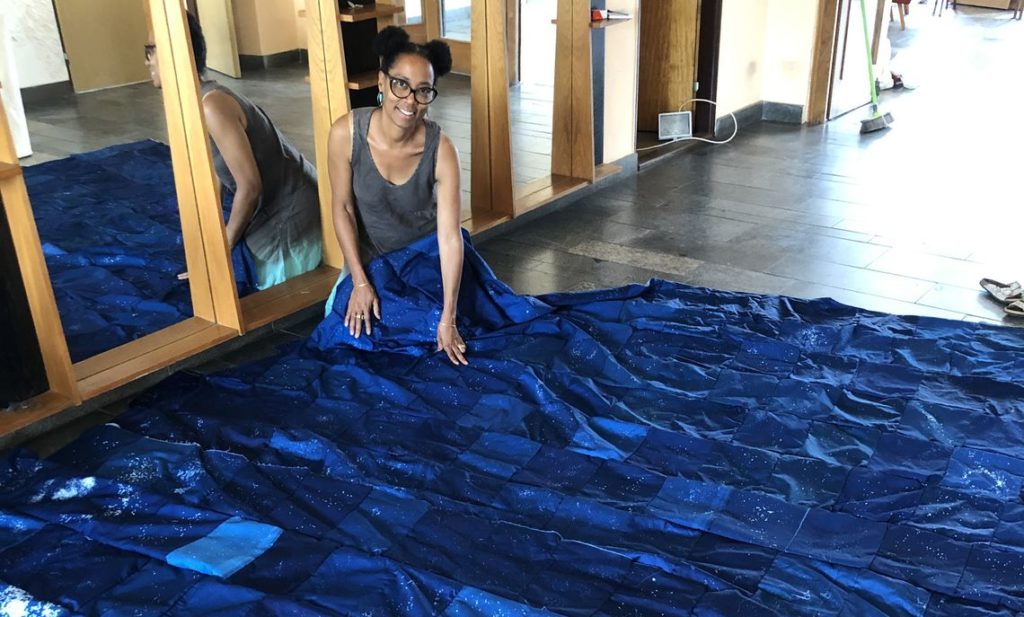By Sojin Shin || Op Eds Editor

Have you ever seen a starry night?
For those of us from urban areas (or students who have spent too long here in the city of Lancaster) the answer is either “no” or “eh, not for a while.”
Even amidst the light pollution, though, there are remnants of an older sky. Unless the sky is extremely cloudy, you can almost always find the North star, otherwise known as Polaris. The most conventional way to find it is to follow an imaginary line that extends from Dubhe and Merak, the two frontmost stars of the Big Dipper. This line will lead you to the Little Dipper (Ursa Minor), of which Polaris is a part. Because Ursa Minor is comprised of dimmer stars, Polaris is often the only observable star; a lone light that guides the weary, quite poetic, no?
But think about it: before streetlights, there were a lot of visible stars. Who knows what the heck that “imaginary line” from the Big Dipper was pointing to? Could you ever really tell what was North on a clear day when the celestial sphere sparkled with all of those stars– legends, souls, and burning clusters of cosmic fuel?
With that in mind, here are four facts about Sonya Clark’s work Finding Freedom, a large piece of quilt that models the starlight that would have guided former slaves running away from the South. It was created as a way to highlight Lancaster as an important stop in the network of the Underground Railroad.
1. The quilt was made through a process called “cyanotype.” In order to make a cyanotype, fabric is entirely submerged in a mixture of water, ammonium ferric citrate, and potassium ferricyanide. You put the object or a shape you desire to archive on top of the fabric. The object is pressed against the fabric for sharp, crisp silhouettes (this is typically done with a glass plate). Expose it under the sunlight or UV light lamps. The result is a fabric of blue (sun-exposed) and white (unexposed) areas.
2. Sonya Clark used seeds to create the dots of white, a symbolism for germinating life.
3. Sonya Clark did not make all the quilts; it was a combined effort of students, researchers at her university, friends, and a group of incarcerated men. When making the cyanotypes, Clark insisted that they need not recreate any constellation, for whatever pattern they create exists somewhere in the vast universe. She had offered the incarcerated men to keep their artwork, but the prison guard remarked that artworks in general were banned in prison. Eventually, men who wanted to keep their artworks were allowed to.
4. There are more than one Big Dippers on this quilt. Some of them are a little wonky looking, but let’s pretend that they are seen from a different angle.
Sonya Clark’s quilt is a marvelous piece of artwork, a joy to the eye. The work is absolutely gorgeous, a vast piece of night sky that stretches just above your head. This isn’t just an exhibit of an object, though. It’s an exhibit of an experience.
Let’s think back to the heck-ton of stars. You are on the run, and you can’t really find the North Star. You are lost. You are tired. You are hungry. Your body aches both from the physical labor and the stress of running, but you have to keep searching the sky despite the fact that your neck feels like it is about to snap backwards.
As you stroll beneath Clark’s work, even when you find a Big Dipper, it is impossible to locate what might be your compass among so many glistening dots. While the exhibit cannot recreate the full physical exhaustion of a run-away slave, it does make your neck cramp from looking up. That isn’t because she is invested in giving us a slipped disc. It’s because, even as your neck hurts, you look at the beauty that surrounds you. Standing under this cloth, you are both lost and immersed in an endless possibility.
Once again, imagine that fugitive, panting for breath, putting his or her life on the line for just a simple right of not being despised. There is hope, but there is also the terror of being alone– the feeling that you could be snatched away at any moment. While we are not all former slaves running away from mortal danger, many of us are constantly running away from or towards something. Standing under the night sky, we come in contact with our own weariness. We are all trying to find freedom.
Sophomore Sojin Shin is the Op Eds Editor. Her email is sshin@fandm.edu.